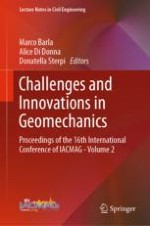This book gathers the latest advances, innovations, and applications in the field of computational geomechanics, as presented by international researchers and engineers at the 16th International Conference of the International Association for Computer Methods and Advances in Geomechanics (IACMAG 2020/21). Contributions include a wide range of topics in geomechanics such as: monitoring and remote sensing, multiphase modelling, reliability and risk analysis, surface structures, deep structures, dams and earth structures, coastal engineering, mining engineering, earthquake and dynamics, soil-atmosphere interaction, ice mechanics, landfills and waste disposal, gas and petroleum engineering, geothermal energy, offshore technology, energy geostructures, geomechanical numerical models and computational rail geotechnics.
